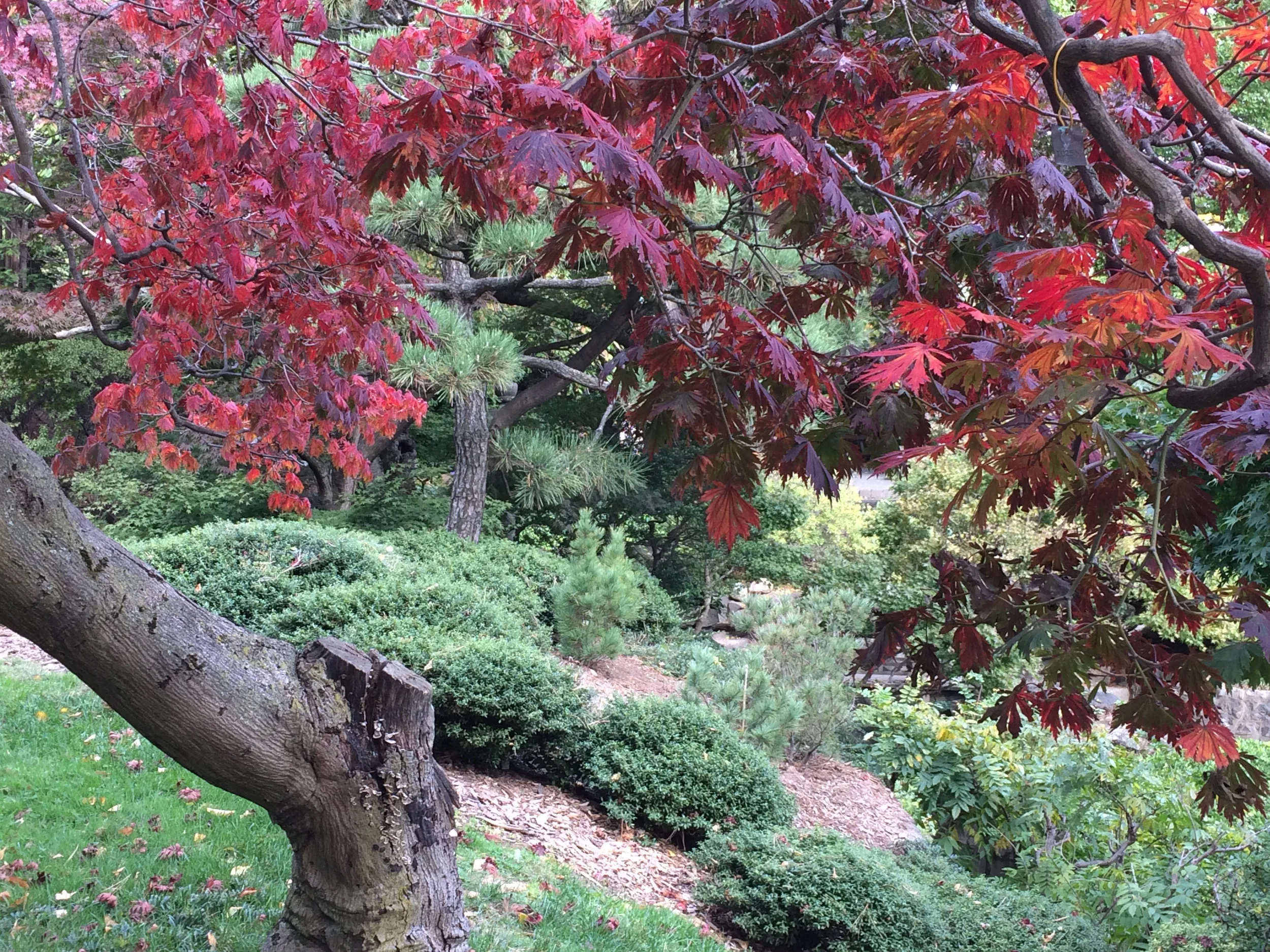Autumn in the Japanese Garden
A Japanese Maple (Acer palmatum)
Every fall, Japanese maples (momiji) turn stunning shades of ochre, plum, orange, red, burgundy and yellow. In the tradition of Momijigari (autumn leaf viewing), the Rikumo team took a field trip to soak up Brooklyn’s Japanese Hill-and-Pond Garden’s autumnal hues.
Neighboring Prospect Heights, Crown Heights, Flatbush and Park Slope, the Japanese Hill-and-Pond Garden is located inside the Brooklyn Botanic Garden (BBG)’s 52-acre oasis. As one of the first Japanese gardens to be created in an American public garden, the BBG’s Japanese garden has enjoyed worldwide renown since it opened to the public in 1915. Many have described it as the finest Japanese garden outside of Japan.
Widely considered to be the masterpiece of its creator, Japanese landscape designer Takeo Shiota (1881–1943), Shiota designed the 3 acre garden to be a blend of the ancient hill-and-pond style and the more modern stroll-garden style, in which various landscape features are gradually revealed along meandering paths. With each new curve in the path, visitors are led through a meditative experience of shifting vistas.
The Japanese garden is a study in contrasting textures and sensations. Soft tufts of greenery frame the rugged Manhattan schist rock surrounding the waterfall. Tall pines, representing permanence and eternity, share ground with flowering cherries, which speak to the ephemerality of life.
Cherries, wisteria, and maples provide seasonal color, while evergreens, cypresses and pine assure color year-round.
Kumazasa bamboo (Sasa veitchii) is planted at the entrance of the garden to beckon visitors in with the soft whispering of its leaves. The Kumazasa plant is also used in our Sasawashi products for its natural anti-bacterial and deodorant properties.
Many of the plants are groomed into curved shapes, reminiscent of hills and clouds.
The garden is designed to engage all of your senses. While strolling, you’ll notice the smell of pine, the crunch of gravel underfoot, the rustling of leaves and the gentle splashing of the waterfall. Carefully placed rocks and boulders serve as guides along the path and contrasts beautifully with the lushness of the foliage.
Among the garden’s many well considered elements, perhaps the most essential is water. The reflection of the garden in the pond unites land, water and sky. Curiously, the pond is the only truly natural formation in the garden. It’s a remnant of a kettle pond, a depression formed by a chunk of a glacier during the last ice age from thousands of years ago. Today it is filled with hundreds of Japanese koi fish.
Shiota’s design is accented by architectural elements such as rustic wooden bridges, fences and a viewing pavilion.
Used in Japanese gardens for centuries to light pathways, stone lanterns now serve as focal points along the path.
Modeled after the majestic Miyajima gate that stands in the sea near the island of Itsukushima in Japan, the vermilion torii (gateway) indicates there is a Shinto shrine in the area and encourages visitors to focus inwardly. Dedicated to Inari, the Shinto god of the harvest, this small shrine is constructed in a traditional manner with only wooden dowels and tightly fitted joints, no metal nails. The entrance is flanked by two statues of foxes, traditional guardians of such shrines.
Surrounded by the luscious foliage, it’s amazing to know that this garden was planned over a century ago and Shiota had designed it with the awareness of how the garden would evolve and change with the seasons and years. Be sure to see the Japanese Hill-and-Pond Garden in its autumn glory and then return back in the spring when it’s transformed into delicate pink and white blossoms.
For visiting information and directions, please see the BBG's website here.
















